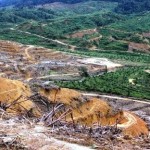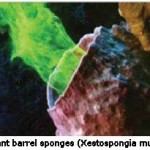
Geneva – Data made available by 46 companies, with over 900 production facilities globally, show a 3.8% reduction in specific net CO2 emissions since 2005 and a 14.3% reduction since 1990.
As well as showing a reduction in CO2 per tonne of cement produced, the data also reveals a reduction in absolute CO2 emissions from companies reporting to the CSI database. These dropped for the first time since data has been gathered, from 596m tonnes in 2007 to 577m tonnes in 2008. This reduction reflects the impact of the economic downturn and global slowdown in construction activity.
The figures are encouraging because they demonstrate that modern blending methods, alternative fuels and the improved energy efficiency of new cement kilns are providing a reduction in the amount of CO2 emitted per tonne of cement produced. The CSI stressed that the important aspect of the findings are the specific, not absolute reductions. “Building and infrastructure projects, particularly in developing countries, will continue to increase demand for concrete – of which cement is the key ingredient. Independent predictions show that this demand will see cement production almost double in the next 20 years.” explained Dr. Howard Klee, Program Director at the CSI.
The CSI’s global cement database, Getting the Numbers Right (GNR), is a voluntary, independently-managed CO2 and energy performance system that provides annual data on the cement industry. It uses a common protocol for measuring, reporting and data analysis, allowing the industry and policy makers to assess the influence of kiln technologies, fuel selection, plant location and other variables on emissions management. Today’s figures include data released for the first time on an individual country basis, including CSI member facilities in China, the USA and UK.
Companies reporting into the CSI’s GNR database cover two thirds of output outside China; or about one third of global cement production. The data highlights significant regional differences regarding the main levers for CO2 reduction. For example, in India, cement plants are among the most thermally efficient in the world, while Europe leads in the use of alternative fossil fuels.
China, which is responsible for almost 50% of cement produced globally, has reduced net emissions significantly, thanks to an ongoing program of kiln replacement. “The technologies used in the region for building new cement plants are now among the most advanced in the world.” explained Dr. Klee, who has seen five Chinese companies join the CSI in the past few months.
The latest data, released today, covers cement production in 2008. There is a one year embargo on data release to comply with anti-trust regulations.
Data can be viewed online at http://www.wbcsdcement.org/co2data
The cement industry continues to reduce CO2 emissions intensity per tonne of cement produced: In 2008, the 46 companies with over 900 cement production facilities voluntarily reporting to the GNR database produced on average 646 kg net CO2 emissions per tonne of cementitious material (the equivalent of 665 kg gross CO2 emissions per tonne of cementitious).
Glossary of Terms
Gross CO2 Emissions: All direct CO2 emissions (excluding on-site electricity production) excluding emissions from biomass
Net CO2 Emissions: Gross CO2 emissions minus emissions from alternative fossil fuels
Cementitious Product: Total of all cement and clinker produced by a cement company and mineral components sold directly to the market, excluding the clinker purchased from another company and used to make cement.
About the World Business Council for Sustainable Development (WBCSD)
The World Business Council for Sustainable Development is a CEO-led, global coalition of some 200 companies committed to sustainable development. Its aim is to be a catalyst for change within business and society. The WBCSD provides a platform to share best practices and advocate business positions on sustainability issues, working with governments, non-governmental and intergovernmental organizations.
Members are drawn from over 35 countries and represent annual revenues of USD 7 trillion. The WBCSD also benefits from a network of 60 national and regional business councils and partner organizations, a majority if which are based in developing countries. For more information, visit www.wbcsd.org
About the Cement Sustainability Initiative (CSI)
The Cement Sustainability Initiative (CSI) is a global effort by 23 leading cement producers, with operations in more than 100 countries. Collectively these companies account for about one third of the world’s cement production and range in size from very large multinationals to smaller local producers. All CSI members have integrated sustainable development into their business strategies and operations, as they seek strong financial performance with an equally strong commitment to social and environmental responsibility. The CSI is an initiative of the World Business Council for Sustainable Development (WBCSD).
Source: WBCSD Press Release dated July 13, 2010.














